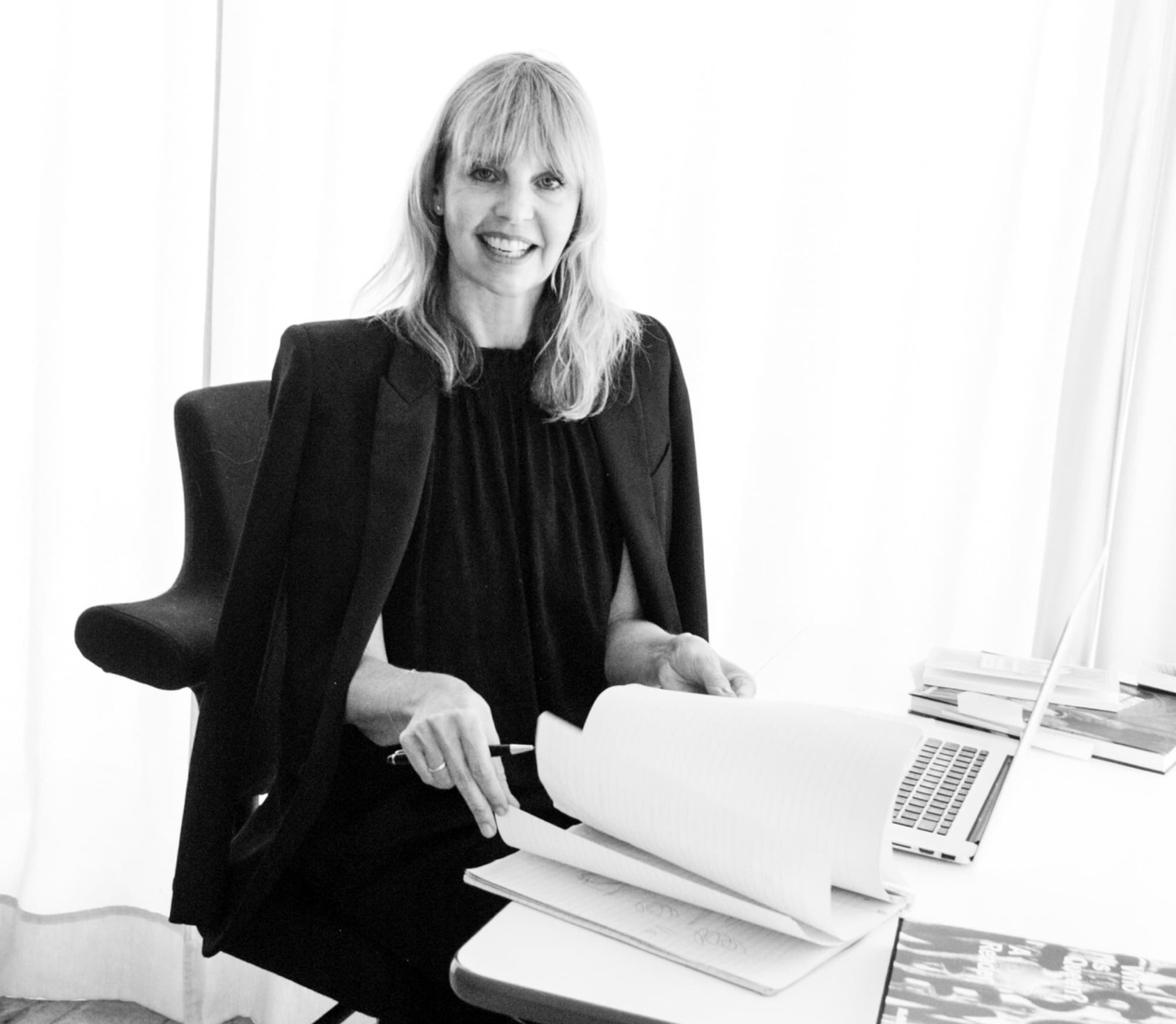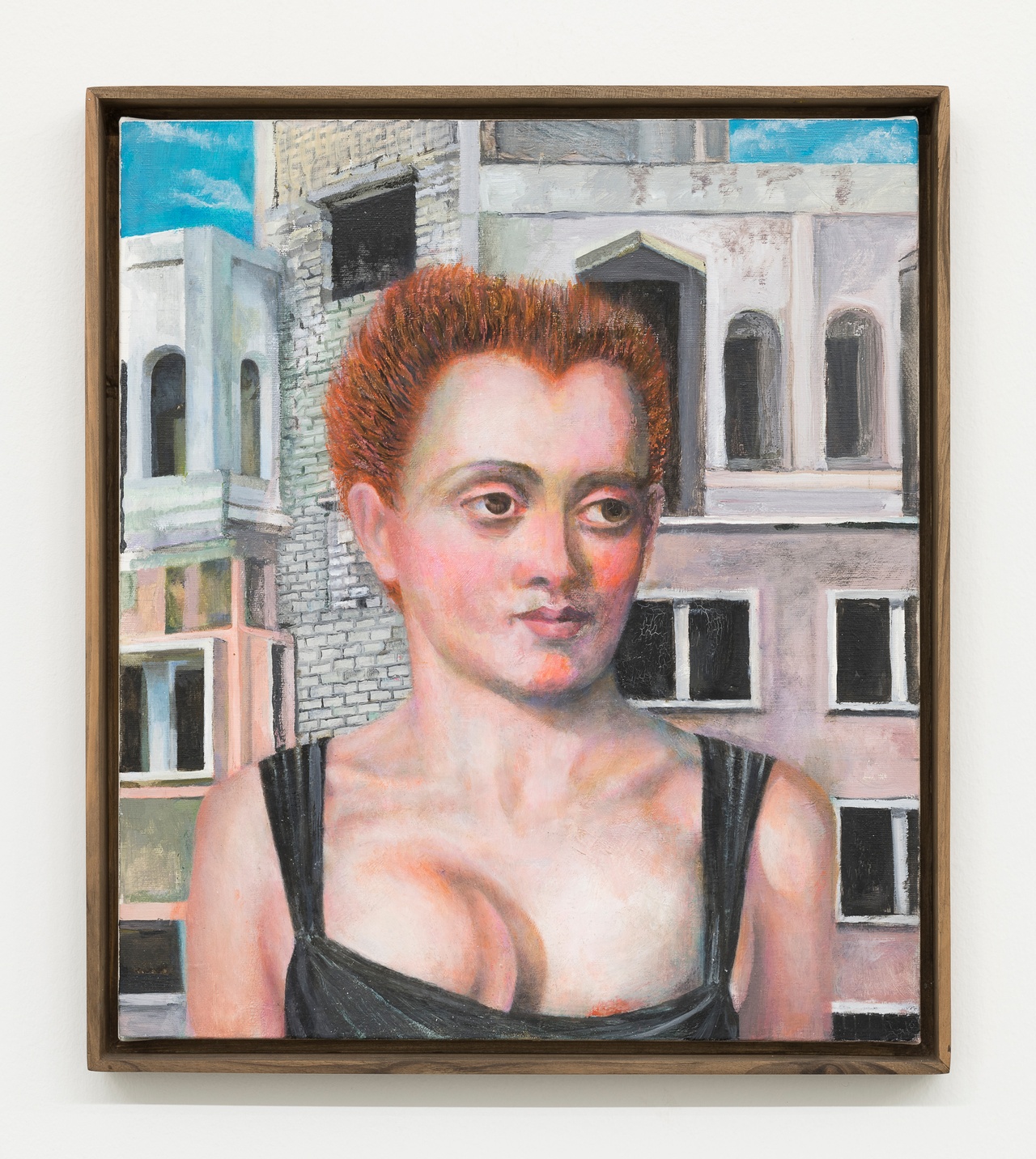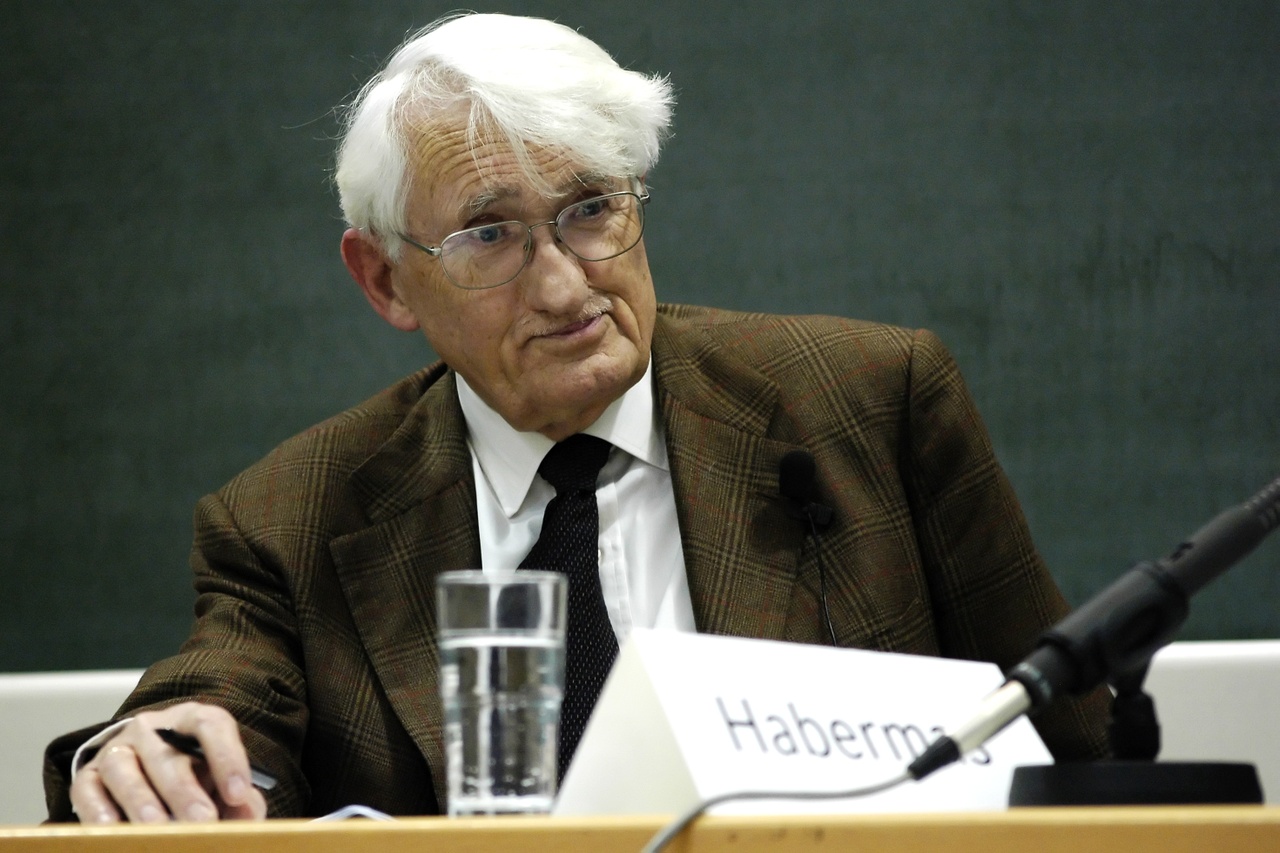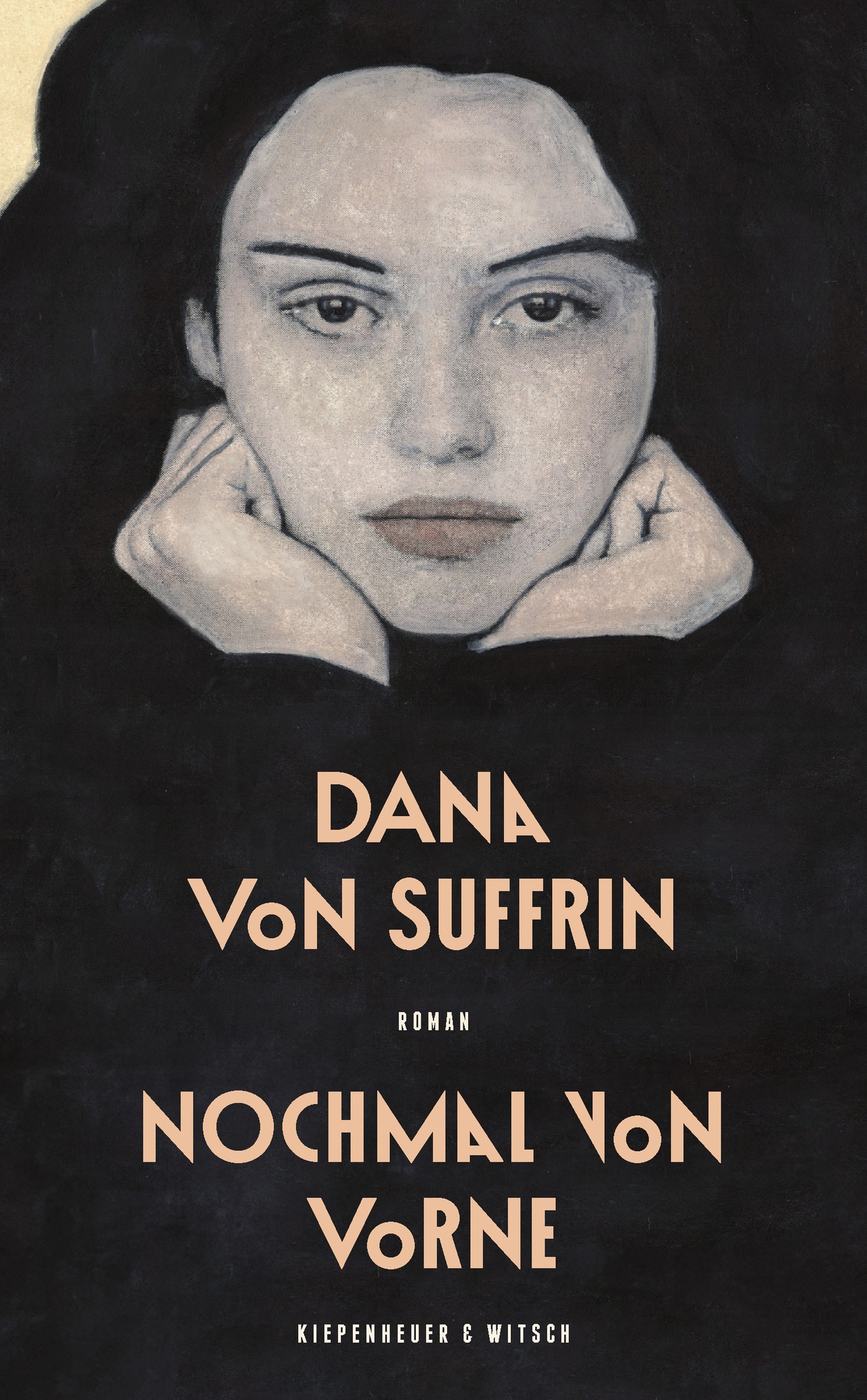KATHARINA WULFF, JÜRGEN HABERMAS, DANA VON SUFFRIN Seen & Read – by Isabelle Graw

In this edition of “Seen & Read,” Isabelle Graw discusses one exhibition and two books, with all three providing different yet related insights into recent history. The Katharina Wulff paintings recently shown at Galerie Neu in Berlin revisited the aesthetics of East Germany’s later years. Philipp Felsch’s book on Jürgen Habermas shines a light on the philosopher’s biography and work, but also on the intellectual life of West Germany. Dana von Suffrin’s new novel narrates a family history replete with multiperspectival memories of “modern Jewish life between Munich and Tel Aviv.”
“Katharina Wulff: Guten Morgen, du Schöne”

Katharina Wulff, “Rita,” 2022
The brilliance of this exhibition, which takes its name from the 1977 East German bestseller by Maxie Wander, is apparent right from the overture, where an additional entrance scene is fashioned from ornamental, hand-cut, cedar-wood room dividers – Moroccan mashrabiyya. Upon walking through this fragrant doorway, one encounters a series of portraits whose small formats and bright colors recall Renaissance painting. Each painting bears the name of the figure it depicts – Rita, for example, is a heavily made-up young woman with short and flamboyantly red hair, stood in front of a De Chirico-like backdrop, her breasts squeezed, like those of a Madonna, by her tight tube top. The carefully combed hair and shaped eyebrows of Jutta irradiate in tones of orange and yellow, her figure set in a scenery of pre-war buildings and industrial architecture. The only indication we are in a post-reunification context is, simultaneously, a kind of punctum within the image: the logo of the Sparkasse savings bank, which was present only in West Germany prior to the fall of the wall. Styled with makeup and elaborate hairdos reminiscent of the 1980s, these uniformly female figures strike confident poses in front of prefabricated buildings (Guten Morgen, du Schöne) or next to electricity pylons (Silke). Wulff’s aesthetic here might also be interpreted as a homage to the renowned East Berlin photographer Sibylle Bergemann, who photographed defiant-looking women against socialist realist backdrops for the fashion magazine Sibylle. Frieda in particular – showing a resolute-looking short-haired woman in a green turtleneck sweater against the backdrop of a postmodern building with industrial towers – is a painterly reinterpretation of one of the photographer’s portraits. Wulff’s paintings also have a site-specific dimension; some of them reference the exhibition spaces of Galerie Neu, situated in a former heating plant in the midst of a prefabricated housing estate in Berlin’s Mitte district. The outer walls of this building are constructed from the same “reinforced river gravel in prefabricated concrete panels” (to quote Dominic Eichler’s press release) depicted in several of Wulff’s paintings. Just as the Moroccan room dividers dispel any hint of provincialism, Wulff’s intimate portraits of women are punctuated by a striking exception – a large-scale pencil drawing (Untitled, 2024) depicting men working out at the gym. The male body, lifting weights or running on treadmills, is portrayed here from various perspectives, in a visual language reminiscent of Fernand Léger and Pierre Klossowski. In comparison to the portraits of women, these figures appear to fade – as if ultimately signaling the end of a masculinity defined by corporal strength.
Galerie Neu, Berlin, March 1–April 21, 2024.
Philipp Felsch, Der Philosoph: Habermas und Wir

Jürgen Habermas, 2008
This excellently written monograph on Habermas offers a succinct post-war intellectual history of West Germany and the reunified post-1990 republic that is its legal successor. Philipp Felsch vividly traces the debates to which Jürgen Habermas was so central: a problem he sadly fails to speak to, however, is that the intellectual life described in his book is constituted only by men. Nonetheless, he does succeed in presenting and critically examining Habermas’s key ideas, such as structural change in the public sphere and the* ideal of communication free of domination*. The reader develops a clear sense of what Habermas’s theoretical interventions were directed against – and likewise of the reception of his proposals and their limitations from today’s perspective. Especially impressive are the passages on the Historikerstreit (historian’s dispute) and the resulting rift between Habermas and Martin Walser. It was political differences too that led to the end of Habermas’s friendship with the then-editor of Merkur, Karl-Heinz Bohrer. The philosopher never wrote for the journal again. In his early essays, he proved an extremely combative author – as evidenced in his polemic against Arnold Gehlen, whose thoughts he denounces as “the political bar talk of a right-wing intellectual who’s lost his way”. Evidence enough that Habermas’s statement to Felsch – that he always wrote his articles “out of rage” – seems entirely plausible.
Ullstein, 2024, 256 pages.
Dana von Suffrin, Nochmal von vorne

In this fast-paced family story, the most traumatic events – the father’s death, the sister’s suicide attempt, the mother’s disappearance – are told with the lightest of touches. From the perspective of protagonist Rosa, even the constant and bitter dispute between her parents – an Israeli living in southern Germany with his German wife and their two daughters – seems nothing but normal. Her literary portrayals of her mother and sister vividly illustrate their fierce resistance against social norms, expressed through frequent outbursts of anger or passionate speeches raging against the injustices of the patriarchy. But even crisis moments like these are narrated with calm, as if they were nothing more than a matter of daily routine. As a reader, one begins to expect the worst – and keeps on reading, mesmerized. However, the fate of the mother and her yoga partner in Thailand remains unresolved; Rosa retreats to her dead father’s apartment, where she stumbles across objects that spark memories of her childhood. The book’s close demonstrates how a person’s view of their parents becomes more forgiving after their death: as they look back, the protagonist and her sister Nadja – both of whom used to constantly poke fun at the mother and father – develop a more empathetic understanding of their parents’ circumstances.
Kiepenheuer&Witsch, 2024, 240 pages.
Isabelle Graw is the cofounder and publisher of TEXTE ZUR KUNST and teaches art history and theory at the Hochschule für Bildende Künste – Städelschule in Frankfurt am Main. Her most recent publications include In Another World: Notes, 2014–2017 (Sternberg Press, 2020), Three Cases of Value Reflection: Ponge, Whitten, Banksy (Sternberg Press, 2021), and On the Benefits of Friendship (Sternberg Press, 2023).
Translation: Matthew James Scown
Image credit: 1. Photo Rob Kulisek; 2. Courtesy the artist and Galerie Neu, Berlin, Photo Stefan Korte, 3. Photo Wolfram Huke; 4. © Kiepenheuer&Witsch
